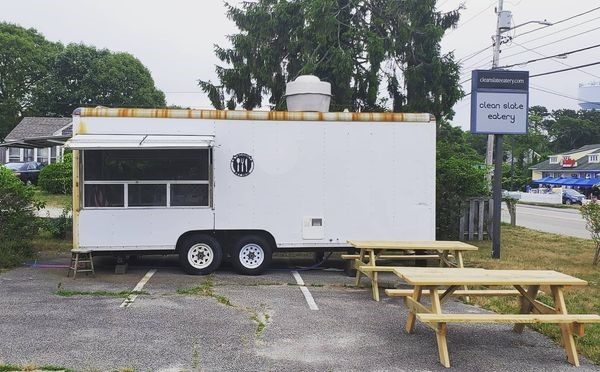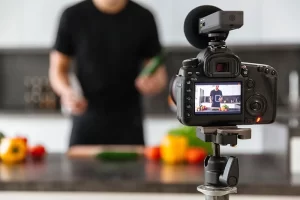
Restaurant dining and B2B buying are similar. Hospitable service, impactful presentation, and satisfying outcomes keep customers coming back for more.
Unless seating capacity is reduced and customers stay home to stay safe.

COVID-19 is changing the practices of both diners and B2B buyers. Not only has customer activity declined, but partaking of a meal and making a business purchase is in transition. Diners and buyers are shifting their habits to improve their experiences.
The best chefs and the best sales teams stay ahead of these purchasing trends. Customer activity is important so the first question is:
How are diners and buyers changing their experiences as customers?
These shifts in experience are bound to have an effect on outcomes, so the second question is:
How do these emerging experiences impact decision-making?
Let’s start with how customer experience is changing.
-
 Dining Experiences. On special occasions, we used to go to a restaurant that seats only sixteen at a time. For $120 a head, we could enjoy a terrific six-course meal with wine pairings, prepared in front of us by a team of three, who continually engaged us in conversation. When lockdown hit, the team closed the restaurant and opened a taco truck out front. Now for $15 a head, we get fabulous creations, from the same innovative chefs, in a box. Instead of once a year, they feed us twice a month. They sell out most days.
Dining Experiences. On special occasions, we used to go to a restaurant that seats only sixteen at a time. For $120 a head, we could enjoy a terrific six-course meal with wine pairings, prepared in front of us by a team of three, who continually engaged us in conversation. When lockdown hit, the team closed the restaurant and opened a taco truck out front. Now for $15 a head, we get fabulous creations, from the same innovative chefs, in a box. Instead of once a year, they feed us twice a month. They sell out most days.
But eating great take-out from a carton is not the same as a good restaurant experience. Our local, more affordable restaurant has quality food and is well set up for conversation. When COVID-19 arrived, they got creative in their approach to limited take-out menus paired with themes. Saturday nights became “movie nights.” Of course, foodie films were sprinkled through the calendar: Ratatouille, Julie and Julia, Chef, and Big Night. But they didn’t limit themselves to food films. In late March they featured Ocean’s Eleven with a menu based on the food Brad Pitt eats in the film. The menu that night included: nachos, shrimp cocktail, cheeseburgers, fruit cups, ice cream, popcorn, candy, Red Bull, and whisky.
The meal was good, and the dining experience while watching the film was enjoyable. Not as much fun as sitting five tables from Brad Pitt at a Hollywood restaurant, but we were never going to get reservations there anyhow. After a few meals, however, the tie between the menu and on-screen programming became confining. So we started to order take-out while watching the reality television show “Chopped.”
 If you haven’t watched Chopped, four chefs compete in a timed, three-course, loser-goes-home contest, where they combine a basket of mystery ingredients into dishes evaluated by three judges. It is an ingredient-restricted version of the Great British Baking Show, but with flashing knives, flaming pans, sprinting contestants, and brash, openly competitive attitudes.
If you haven’t watched Chopped, four chefs compete in a timed, three-course, loser-goes-home contest, where they combine a basket of mystery ingredients into dishes evaluated by three judges. It is an ingredient-restricted version of the Great British Baking Show, but with flashing knives, flaming pans, sprinting contestants, and brash, openly competitive attitudes. Eating take-out Pad Thai one night, we were glued to a Season 21 Chopped episode called Food Truck Fight. For their appetizer, the four contestants had to combine strawberry shortcake ice cream bars, ground lamb, caviar, and empanada dough. The episode winner served Larb Lamb Salad with Strawberry Shortcake Mint Sauce. For his entrée, he created Suckling Pig Thai Curry with Pickled Fiddlehead Ferns. His dessert was Coconut Ice Cream with Waffle Wontons. As we googled fiddlehead ferns, we turned up the volume and imagined sitting two tables from the judges, surrounded by restaurant clatter.
Eating take-out Pad Thai one night, we were glued to a Season 21 Chopped episode called Food Truck Fight. For their appetizer, the four contestants had to combine strawberry shortcake ice cream bars, ground lamb, caviar, and empanada dough. The episode winner served Larb Lamb Salad with Strawberry Shortcake Mint Sauce. For his entrée, he created Suckling Pig Thai Curry with Pickled Fiddlehead Ferns. His dessert was Coconut Ice Cream with Waffle Wontons. As we googled fiddlehead ferns, we turned up the volume and imagined sitting two tables from the judges, surrounded by restaurant clatter.
We weren’t actually dining at a Thai restaurant. We weren’t chatting with waitstaff or bartenders. But take-out with reality TV was an uptick in the dining experience over frozen pizza from the freezer.
 B2B Buying Experiences. Let’s start with the obvious. Digital marketing has become more important. One content marketing platform found that, as COVID-19 took hold, B2B digital content engagement increased more than 40%, measured both by visitor sessions and asset views. With that increase in activity coinciding with an increase of 15% in time spent, B2B buyers’ attention span for each piece of content is declining. The degree of difficulty for salespeople to reach buyers is increasing, with a McKinsey buyer survey finding that only 20–30% of B2B buyers want to ever interact with reps in person even in their ideal/post-COVID-19 model.
B2B Buying Experiences. Let’s start with the obvious. Digital marketing has become more important. One content marketing platform found that, as COVID-19 took hold, B2B digital content engagement increased more than 40%, measured both by visitor sessions and asset views. With that increase in activity coinciding with an increase of 15% in time spent, B2B buyers’ attention span for each piece of content is declining. The degree of difficulty for salespeople to reach buyers is increasing, with a McKinsey buyer survey finding that only 20–30% of B2B buyers want to ever interact with reps in person even in their ideal/post-COVID-19 model.
With the shift to virtual buying, the importance of the digital experience has increased. A 2019 McKinsey buyer survey showed that those suppliers who provide outstanding digital experiences to their buyers are more than twice as likely to be chosen as a primary supplier than those who provide poor experiences, and about 70 percent more likely than those providing only fair ones. The quality and interactivity of website content is increasing, with ever-improving capabilities for monitoring, testing, and improving the performance and productivity of that content. When B2B buyers are willing to take meetings, they are invariably remote. Virtual conferences are up 1,000%. “Cameras on” has become the rule in online interactions, with Zoom business customers up by 350% and webcams in short supply. That said, sales executives are concerned about the effectiveness of online selling. This should come as no surprise, given economic uncertainty, personal anxiety, and limited buyer attention spans.
When B2B buyers are willing to take meetings, they are invariably remote. Virtual conferences are up 1,000%. “Cameras on” has become the rule in online interactions, with Zoom business customers up by 350% and webcams in short supply. That said, sales executives are concerned about the effectiveness of online selling. This should come as no surprise, given economic uncertainty, personal anxiety, and limited buyer attention spans.
Making virtual sales conversations effective is about more than switching on a webcam. It is about having the right conversation. It involves engaging buyers in a memorable, empathetic discussion of their problems. Invariably, one of their problems is that their finance departments require higher standards and a sound business case to buy for new and existing purchases. As a recent Harvard Business Review piece put it, “Pitch all deals like you’re pitching to a CFO.” B2B buyers who engage with sellers need to ask tough questions about business outcomes and financial value.
With those changes in customer experience in mind, let’s look at how these changes are transforming how diners and buyers make decisions.
-
- Dining Decisions. For better or for worse, reality television drags us all into the decision-making process. After packing ten episodes of Chopped into a two-week period, we realized that there are only three things that matter to the judges each time they send a chef home:
-
- Follow the rules. Failure to use the required ingredients usually results in a chef being chopped. It doesn’t take much judging expertise to make a referee’s call on that, so we have been thinking about our own rules. Any restaurant staff that we encounter in real life had better be wearing a mask.
-
- Visuals are important. Television viewers’ only applicable senses are sight and sound. Now that Chopped is a regular part of our dining experience, we pay attention to how we present the contents of our take-out cartons. Cardboard is out. Dinner china is in.

- Visuals are important. Television viewers’ only applicable senses are sight and sound. Now that Chopped is a regular part of our dining experience, we pay attention to how we present the contents of our take-out cartons. Cardboard is out. Dinner china is in.
- Set high standards of taste. This is a weakness of virtual dining. We have to take a judge’s word for how a course actually tastes. This means that a judge must be able to savor a dish convincingly and be plausible in describing the flavors they experience. We will never develop the skills of a world-class chef or a gourmet food writer, but we have a better vocabulary and are more discerning of the dining result that matters most. Does the food make our taste buds, our noses, and our stomachs happy?
-
- Dining Decisions. For better or for worse, reality television drags us all into the decision-making process. After packing ten episodes of Chopped into a two-week period, we realized that there are only three things that matter to the judges each time they send a chef home:
- B2B Buying Decisions. The Chopped experience provides significant insights into the trends and emerging buyer requirements as they make B2B decisions:
-
 There are rules, even if no one has written them down. Failure to respect a buyer’s decision to avoid face-to-face meetings, shaking hands, or people without a mask usually means game over. Going into an online meeting with a bad internet connection or an inability to use the chosen online meeting system usually means a bad sales call. Buyers’ habits and attitudes may be less readable when facial cues and body language are impaired. Sales teams need to deal with it, have their radar on high alert, and adjust to buying behavior.
There are rules, even if no one has written them down. Failure to respect a buyer’s decision to avoid face-to-face meetings, shaking hands, or people without a mask usually means game over. Going into an online meeting with a bad internet connection or an inability to use the chosen online meeting system usually means a bad sales call. Buyers’ habits and attitudes may be less readable when facial cues and body language are impaired. Sales teams need to deal with it, have their radar on high alert, and adjust to buying behavior.
-
 Do not neglect visual presentation. Field sales personnel who are used to entertaining clients or charming customers with their fast wit in a meeting room will be at a disadvantage if they don’t up their content game as they engage remotely. Buyers who might have responded well to an in-person meeting with a lot of eye contact may not be as engaged if all the rep does is turn on the webcam. Account executives who were adept at presenting PowerPoint in a meeting room will be less effective online unless their content invites the buyer to talk about their problems and interact with their content in a memorable way.
Do not neglect visual presentation. Field sales personnel who are used to entertaining clients or charming customers with their fast wit in a meeting room will be at a disadvantage if they don’t up their content game as they engage remotely. Buyers who might have responded well to an in-person meeting with a lot of eye contact may not be as engaged if all the rep does is turn on the webcam. Account executives who were adept at presenting PowerPoint in a meeting room will be less effective online unless their content invites the buyer to talk about their problems and interact with their content in a memorable way.
 Buyers make decisions based on outcomes and specific value. Buyers, like diners, are learning to communicate their needs and their buying experience more directly. They ask tougher questions in making new purchases or in renewing a business relationship. They want a clear understanding of what a purchase will do to address their problems. They increasingly demand a clear understanding of how a decision to change, stay, or evolve will deliver results and specific value to them. They will do their own math on value and ROI with or without the benefit of a sales conversation. Sales teams need to be proactive, interactive, and early in helping buyers visualize value. They need to quantify the specific value that buyers should expect. Will the purchase make a sponsor or champion successful? Will the meal taste great?
Buyers make decisions based on outcomes and specific value. Buyers, like diners, are learning to communicate their needs and their buying experience more directly. They ask tougher questions in making new purchases or in renewing a business relationship. They want a clear understanding of what a purchase will do to address their problems. They increasingly demand a clear understanding of how a decision to change, stay, or evolve will deliver results and specific value to them. They will do their own math on value and ROI with or without the benefit of a sales conversation. Sales teams need to be proactive, interactive, and early in helping buyers visualize value. They need to quantify the specific value that buyers should expect. Will the purchase make a sponsor or champion successful? Will the meal taste great?
-
Better Experiences. Customers are increasingly prepared to make tougher decisions based on the experiences they have both dining and buying. Sales teams who understand that they are on the chopping block can either let the meal drift aimlessly or be proactive in supporting better attuned, remote customer collaboration. A strong, interactive Value Proposition provides core content that improves the buyer’s experience interacting with sales online. Value selling increases sales velocity by centering customer conversations on the outcomes our solution will deliver. A good Value Proposition is a qualitative, quantitative, and financial conversation centered on the customer’s problems, adapted to customer specifics, that creates a compelling vision of what our solution will deliver to them. That vision includes the dollarized or euro-ized results they can expect.
Implementing value selling successfully requires a few critical initiatives – providing strong Value Proposition content and mobilizing sales are key among them. But the tangible and intangible benefits of driving value selling are worth the investment. The right content, presented effectively, results in satisfied customers.

